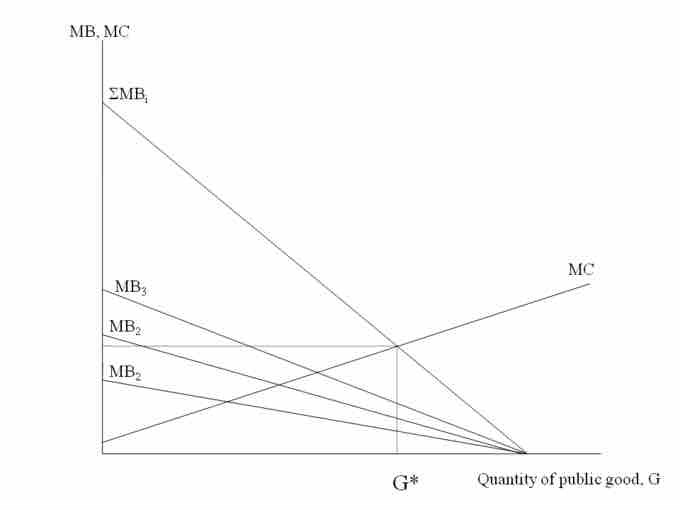The aggregate demand for a public good is derived differently from the aggregate demand for private goods.
To an individual consumer, the total benefit of a public good is the dollar value that he or she places on a given level of provision of the good. The marginal benefit for an individual is the increase in the total benefit that results from a one-unit increase in the quantity provided. The marginal benefit of a public good diminishes as the level of the good provided increases.
Public goods are non-rivalrous, so everyone can consume each unit of a public good. They also have a fixed market quantity: everyone in society must agree on consuming the same amount of the good. However, each individual's willingness to pay for the quantity provided may be different. The individual demand curves show the price someone is willing to pay for an extra unit of each possible quantity of the public good.
The aggregate demand for a public good is the sum of marginal benefits to each person at each quantity of the good provided . The economy's marginal benefit curve (demand curve) for a public good is thus the vertical sum all individual's marginal benefit curves. The vertical summation of individual demand curves for public goods also gives the aggregate willingness to pay for a given quantity of the good.

Demand for a Public Good
The sum of the individual marginal benefit curves (MB) represent the aggregate willingness to pay or aggregate demand (∑MB). The intersection of the aggregate demand and the marginal cost curve (MC) determines the amount of the good provided.
This is in contrast to the aggregate demand curve for a private good, which is the horizontal sum of the individual demand curves at each price. Unlike public goods, society does not have to agree on a given quantity of a private good, and any one person can consume more of the private good than another at a given price.
The efficient quantity of a public good is the quantity that maximizes net benefit (total benefit minus total cost), which is the same as the quantity at which marginal benefit equals marginal cost.